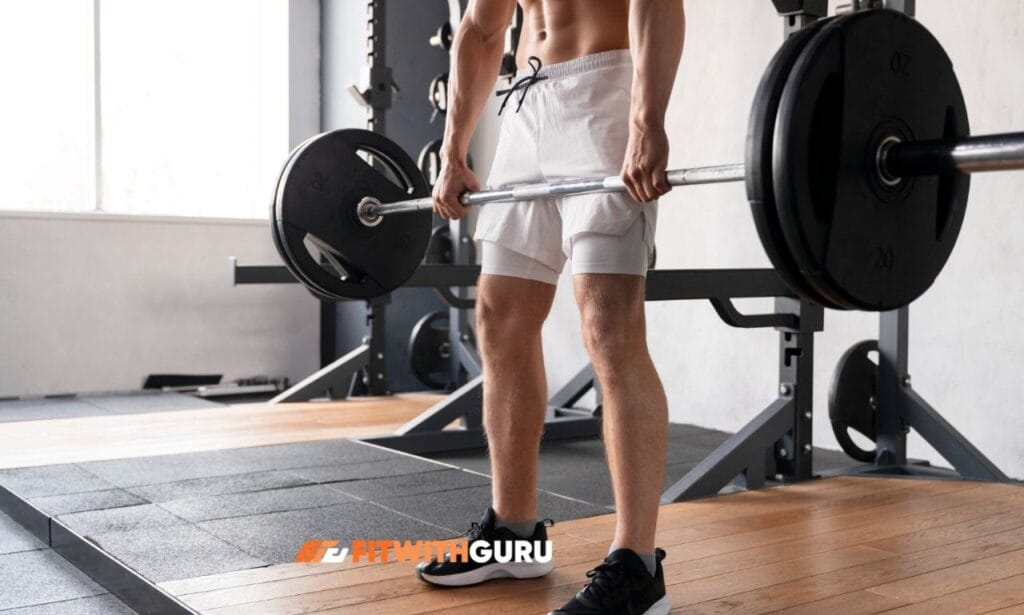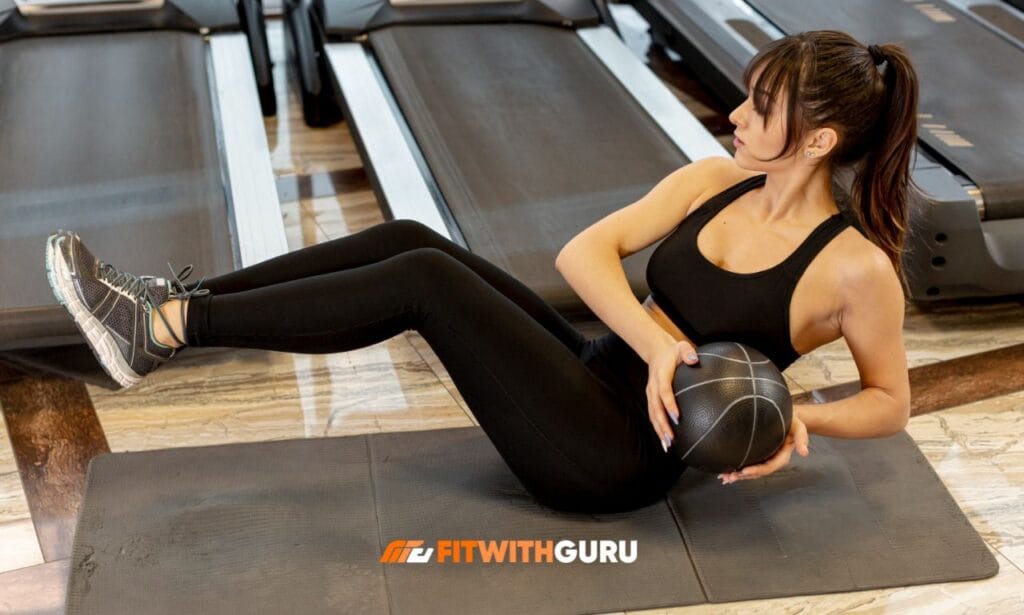Strength training for cyclists is a critical component that can significantly improve performance, endurance, and prevent injuries. By focusing on building power in the muscles, cyclists can ride longer distances, increase speed, and handle challenging terrains more efficiently.
Strength training helps cyclists develop the necessary muscles to sustain power during cycling sessions, whether on flat roads or steep hills. In this article, we will discuss the top 10 power moves that every cyclist should incorporate into their Strength training for cyclists routine to enhance their cycling performance.
1. Squats: Building a Strong Foundation
One of the best Strength training for cyclists exercises for cyclists is the squat, which works the quadriceps, hamstrings, and glutes. These muscle groups play a crucial role in the pedaling motion, making squats essential for cyclists looking to build overall lower body strength.
Why Squats Are Important for Cyclists
Cyclists rely heavily on their legs for pedaling power. Squats improve leg strength, which translates directly to more efficient pedal strokes and better stamina. Furthermore, squats enhance joint mobility and flexibility, improving cycling form and preventing injuries.
How to Perform Squats:
- Stand with your feet shoulder-width apart.
- As though you were reclining in a chair, lower your hips while maintaining a straight spine.
- To go back to the beginning posture, push through your heels after descending until your thighs are parallel to the floor.
2. Deadlifts: Powering Up the Posterior Chain
Deadlifts are another essential strength move for cyclists. This exercise focuses on the posterior chain, including the hamstrings, glutes, lower back, and core. It’s an excellent exercise for cyclists who want to improve their cycling power and posture.
Deadlifts for Cyclists
For cyclists, strong hamstrings and glutes are critical for powerful pedaling, especially during climbs or sprints. Deadlifts help build strength in these muscle groups, improving cycling efficiency and performance.

How to Perform Deadlifts:
- Standing with the barbell in front of you, place your feet shoulder-width apart.
- To get an overhand grip on the barbell, bend at the hips and knees.
- Keeping your back straight, lift the bar by driving your hips forward and standing up tall.
- With a deliberate motion, lower the bar back to the floor.
3. Lunges: Stability and Power
Lunges help increase balance, stability, and coordination by working the quadriceps, hamstrings, and glutes. These benefits are crucial for cyclists who need to maintain proper form, especially on uneven surfaces or when out of the saddle.
Why Lunges Are Effective for Cyclists
By focusing on the muscles used during the pedal stroke, lunges replicate the motion of cycling. Regular lunges improve flexibility, leg strength, and joint stability, all of which help cyclists maintain control and comfort throughout long rides.
How to Perform Lunges:
- Stand upright with your feet shoulder-width apart.
- Take a step forward with one leg, lowering your hips until both knees are bent at 90 degrees.
- To get back to the beginning position, push through the front foot’s heel.
- Repeat on the other side.
4. Step-Ups: Strengthening the Legs
Step-ups are a great strategy to increase cardiovascular endurance and leg strength. This exercise mimics the action of climbing, which is essential for cyclists who frequently encounter hills and inclines.
Step-Ups for Cyclists
For cyclists, step-ups are an effective exercise to strengthen the quads, glutes, and hamstrings. This move helps cyclists generate power for uphill climbs and sprinting, making it a key addition to Strength training for cyclists routines.
How to Perform Step-Ups:
- Find a bench or box that’s knee height.
- Step one foot up onto the bench, pushing through your heel to lift your body.
- Return to the starting position and repeat with the other leg.
5. Planks: Core Strength for Better Cycling Posture
A strong core is vital for maintaining proper cycling posture and stability. Planks are a great core exercise that engages the abdominals, obliques, and lower back muscles, all of which are necessary for efficient cycling performance.
Why Planks Benefit Cyclists
Cyclists need a strong core to maintain proper posture and prevent fatigue. Particularly on lengthy rides, a strong core enhances pedaling efficiency and helps avoid back strain.
How to Perform a Plank:
- Start by placing your elbows exactly beneath your shoulders in a forearm plank position.
- Maintain a straight body alignment from head to heels by using your core.
- Hold for 30 seconds to one minute.
6. Bulgarian Split Squats: Isolating Leg Muscles for Maximum Power
The Bulgarian split squat is an advanced variation of the standard squat, focusing on one leg at a time. This move isolates the quads, hamstrings, and glutes, helping to improve leg strength and balance.
Bulgarian Split Squats for Cyclists
This exercise is particularly useful for cyclists who want to strengthen each leg individually. It enhances unilateral leg strength, which is vital for powerful and efficient pedaling on both sides of the body.
How to Perform Bulgarian Split Squats:
- Stand a few feet away from a bench or elevated surface.
- Place one foot behind you on the bench.
- Lower your hips toward the ground, keeping your front knee aligned with your ankle.
- Return to the beginning position by pushing through your front heel.
7. Hip Thrusts: Targeting Glutes for Power Pedaling
Hip thrusts focus on building glute strength, which is essential for powerful cycling sprints and climbs. By engaging the glutes, cyclists can generate more power with each pedal stroke.
Hip Thrusts for Cyclists
Cyclists need strong glutes to generate power during sprints and climbs. Hip thrusts are an effective exercise to strengthen the glutes and improve pedaling efficiency.

How to Perform Hip Thrusts:
- Place your upper back against a bench while sitting on the floor.
- Roll a barbell over your hips and drive your hips upward, squeezing your glutes.
- With a deliberate movement, lower your hips back down.
8. Leg Press: Building Lower Body Power
The leg press machine is a great way to safely build lower body Strength training for cyclists without putting too much strain on the joints. This exercise focuses on the quads, hamstrings, and glutes, making it perfect for cyclists looking to improve their cycling power.
Leg Press for Cyclists
The leg press machine allows cyclists to focus on strengthening their legs without the need for balance or coordination. It’s a great way to build overall lower-body strength for cycling.
How to Perform a Leg Press:
- Your feet should be shoulder-width apart while you sit on the leg press machine.
- Push the platform away by extending your legs.
- Slowly lower the platform back down.
9. Kettlebell Swings: Full-Body Power and Endurance
Kettlebell swings are a powerful exercise that targets the core, hamstrings, and glutes while working the entire body. This exercise helps build the endurance needed for long cycling rides and improves Strength training for cyclists efficiency.
Kettlebell Swings for Cyclists
The kettlebell swing mimics the explosive power required for cycling sprints. It improves endurance, core stability, and hip power, making it a great addition to any cyclist’s Strength training for cyclists routine.

How to Perform Kettlebell Swings:
- Holding a kettlebell in both hands, stand with your feet shoulder-width apart.
- Swing the kettlebell between your legs, then explosively drive your hips forward to swing it up to chest height.
- Control the descent and repeat.
10. Box Jumps: Boosting Explosive Power for Sprints
Boxes jumps are an explosive movement that helps cyclists develop the power and speed needed for short, intense bursts of effort, such as sprints or hill climbs.
Box Jumps for Cyclists
For cyclists, box jumps improve explosive power, which is essential for accelerating out of turns, sprinting, or climbing hills. These jumps help increase leg strength and overall power output during high-intensity efforts.
How to Perform Box Jumps:
- Place yourself in front of a stable platform or box.
- As you leap onto the box, swing your arms and bend your knees.
- Land softly with both feet and step back down.
FAQs about Strength Training for Cyclists
1. How Often Should Cyclists Do Strength Training?
Cyclists should aim for two to three Strength training for cyclists sessions per week, focusing on different muscle groups. This allows for adequate recovery while also improving cycling performance.
2. Can Strength Training Help with Climbing Hills?
Yes, strength training, particularly exercises like squats, lunges, and step-ups, can enhance muscle endurance and power, which is crucial for hill climbing.
3. Should I Do Strength training for cyclists Before or After Cycling?
It’s generally recommended to do strength training after cycling. This ensures that your legs have enough energy for your cycling session, while strength training helps you recover and build power.
4. How Long Should I Rest Between Strength training for cyclists Sets?
It’s best to take 60 to 90 seconds off in between sets to increase your strength and power. This allows your muscles to recover sufficiently before tackling the next set.
5. Can Strength training for cyclists Prevent Injuries for Cyclists?
Yes ,Strength training for cyclists can significantly reduce the risk of cycling-related injuries by improving muscle imbalances, enhancing joint stability, and boosting overall flexibility.
Conclusion
Strength training for cyclists is a game-changer when it comes to improving performance, building power, and preventing injuries. Incorporating the 10 power moves mentioned in this article will give you a well-rounded routine that strengthens every muscle group crucial for cycling.
Whether you’re sprinting, climbing, or riding long distances, these exercises will help you become a stronger, more efficient cyclist. Stay consistent, listen to your body, and keep pushing your limits!

